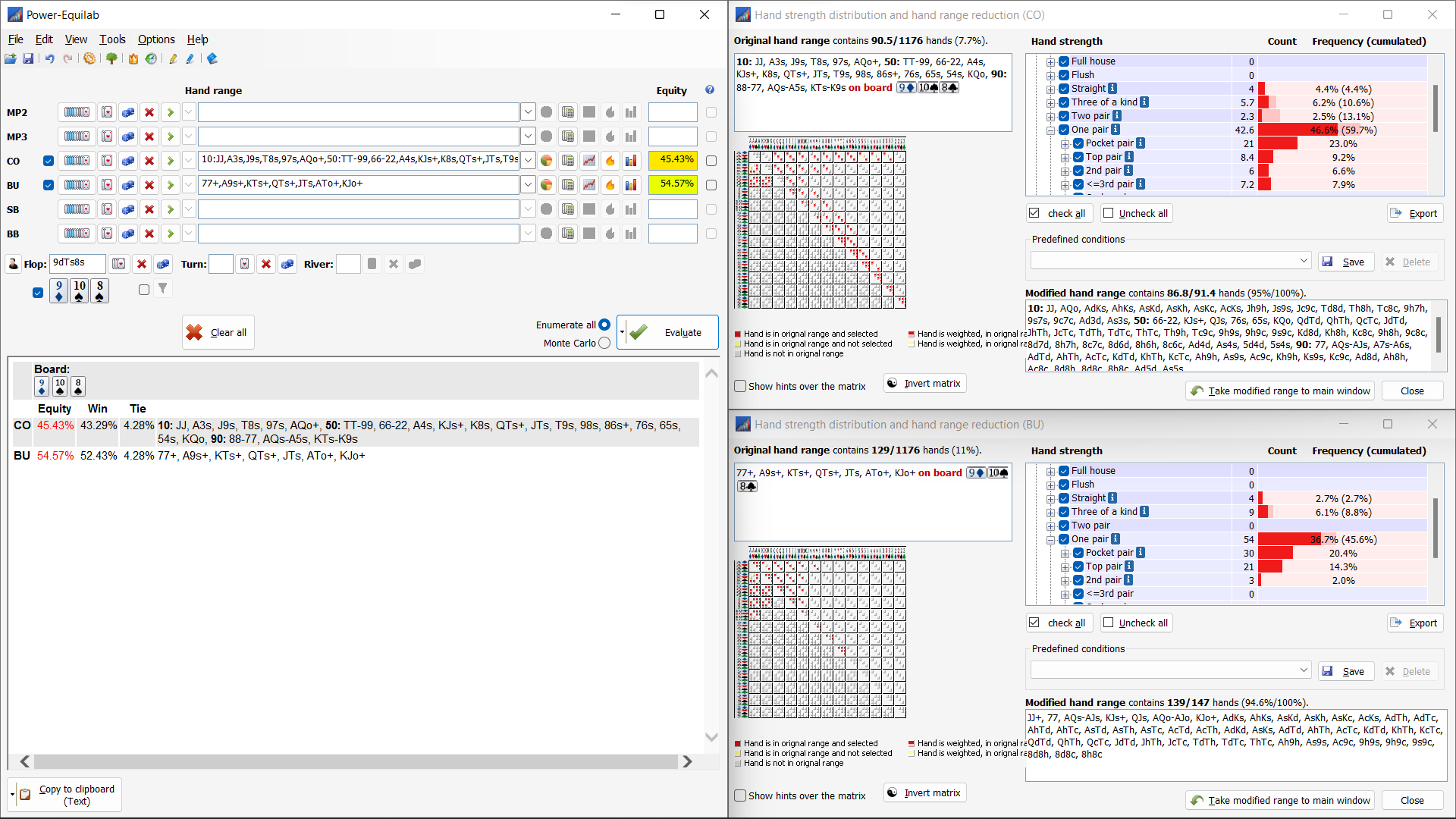Let's say villain on the cutoff (CO) raised first in. Hero on the button (BN) 3-bet and CO calls. Flop comes Ts9c8s. Using my ranges (shown in the screenshot below) as well as equilab I noticed that the BN has an equity edge on this street, but CO has more made hands both in terms of quantity and quality. What would your strategy be if you are the hero (or villain) in this type of situation, aka with higher equity but less made hands, or vice versa with lower equity but more made hands? Thanks!
2 Answers
Looking at the ranges, it seems to me that BTN's equity advantage comes from having more Overpairs and more Top-pair hands than CO. It's also to be expected in a 3-bet pot that you would have some advantage since calling 3-bets filters the amount of overpairs CO can have on a Txx board. Problem that happened here is that the board is very connected, already making straights possible, and allowing a lot of strong draws to exist in both ranges.
That said, the CO's range is what they call a mid-heavy or condensed. He has a lot of medium strength hands, and decent draws, and less complete trash or high value made hands (you guys both have all the sets, and CO only has a tiny bit o extra straights).
In a sitation like this, you would want to bet a bigger betsize, to really put pressure on medium-strength hands and draws.
However, you can not just bet your entire range of hands for a huge sizing as you will have medium hands that want to play a smaller pot yourself, such as weak top-pair hands and decent draws.
I think you can size up with Overpairs+, maybe even TPTK, and some very strong draws. However, you will probably have to check certain strong hands so your checkback range is not going to be too weak.
CO will face a large sizing, and will have to take a more passive role in this hand, unless the board dynamically shifts (f.e. the board pairs, overcard, or the flush comes in).
When you say "hands made" I am assuming you mean that the CO has a better hand than BTN at that moment.
The big difference between having a made hand and having high equity is that a made hand doesnt have to draw to anything, its already a strong hand.
Having a hand with high equity means that on average, the hand will win after the river a high amount of the time, but not all of the time (depending on the equity).
The strategies can vary quite a bit between these two hands because both of these terms can represent a wide range of hands. For example, a high equity hand could be a draw, it could be a high card, it could be a pocket pair on a low board, etc. A made hand could represent a flopped straight, 2 pair, etc. which have varying relative strength depending on the board (for example, 2 pair or a set is not as strong on a board with 4 of the same suit or 4 to a straight).
generally, a good rule of thumb would be that ranges with a lot of made hands want to prevent ranges with high equity from realizing their equity (usually this means getting to showdown). Conversely, high equity hands want to realize their equity versus a range of a lot of made hands.
